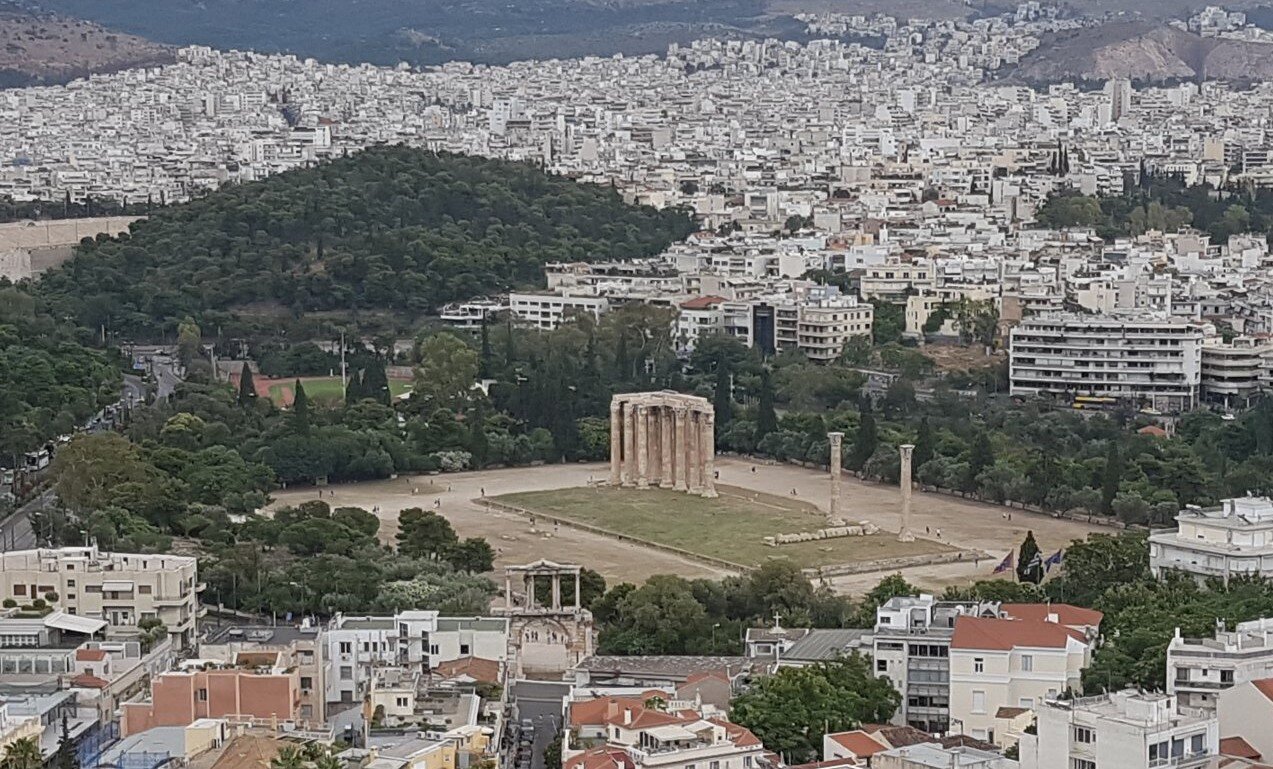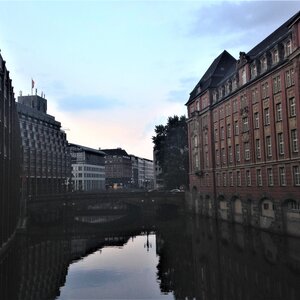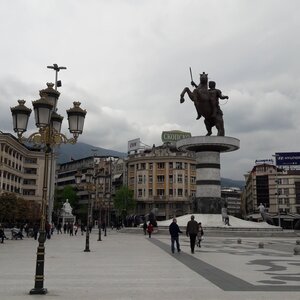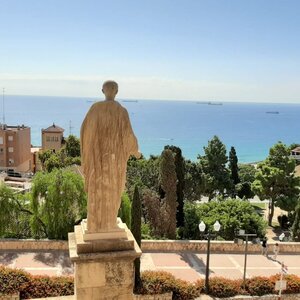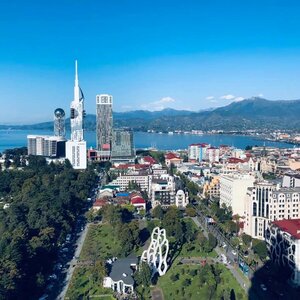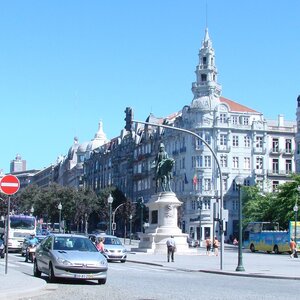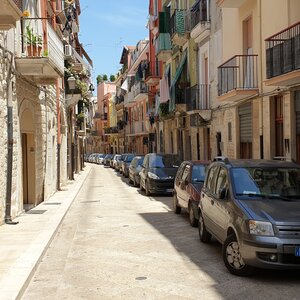Athens is the country’s largest city, its economic and cultural center. For many, it is the birthplace of European civilization. Here, history, familiar to us from school textbooks, is harmoniously intertwined with modernity. Here lived such great figures as Socrates, Aristotle, Plato, Euripides and Sophocles — although not all of them are considered to have actually existed. Here everyone feels a sense of belonging to something great.
I’m sharing with you a one-day walking itinerary of Athens. During the day you will pass the most famous sights of the city — something you should see for sure. Prepare comfortable shoes — you will have to walk a lot and sometimes uphill.
Syntagma Square (Πλατεία Συντάγματος)
It is convenient to start your sightseeing tour with a visit to Syntagma Square, or Syntagmatos. This is where the Athens Parliament Building, once the seat of the Greek monarchs, is located.
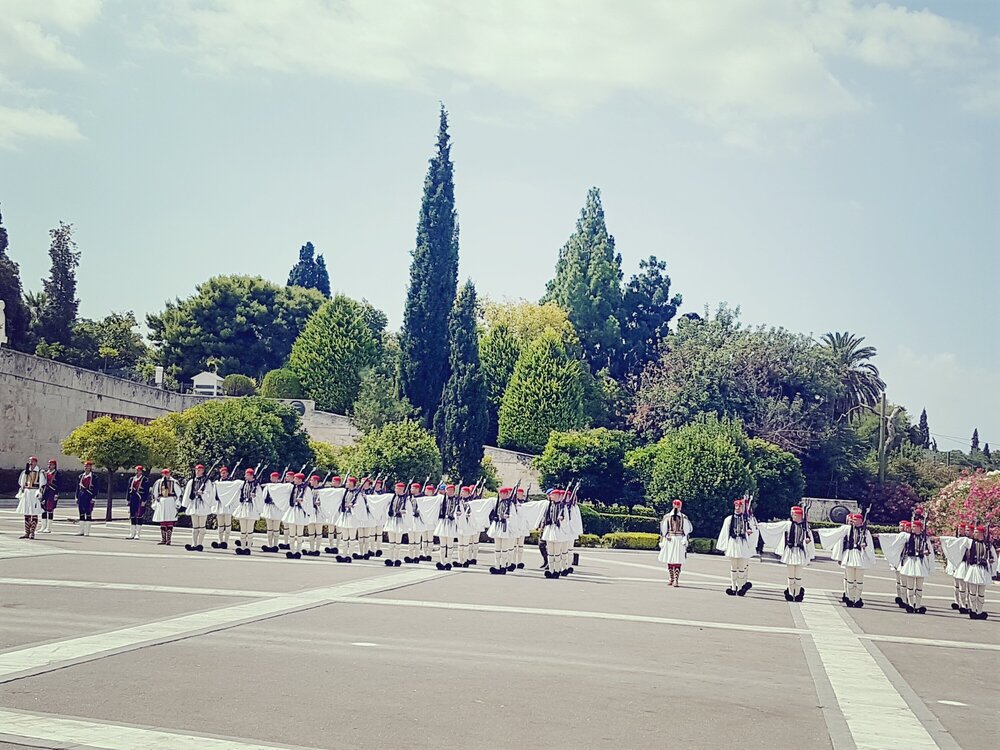
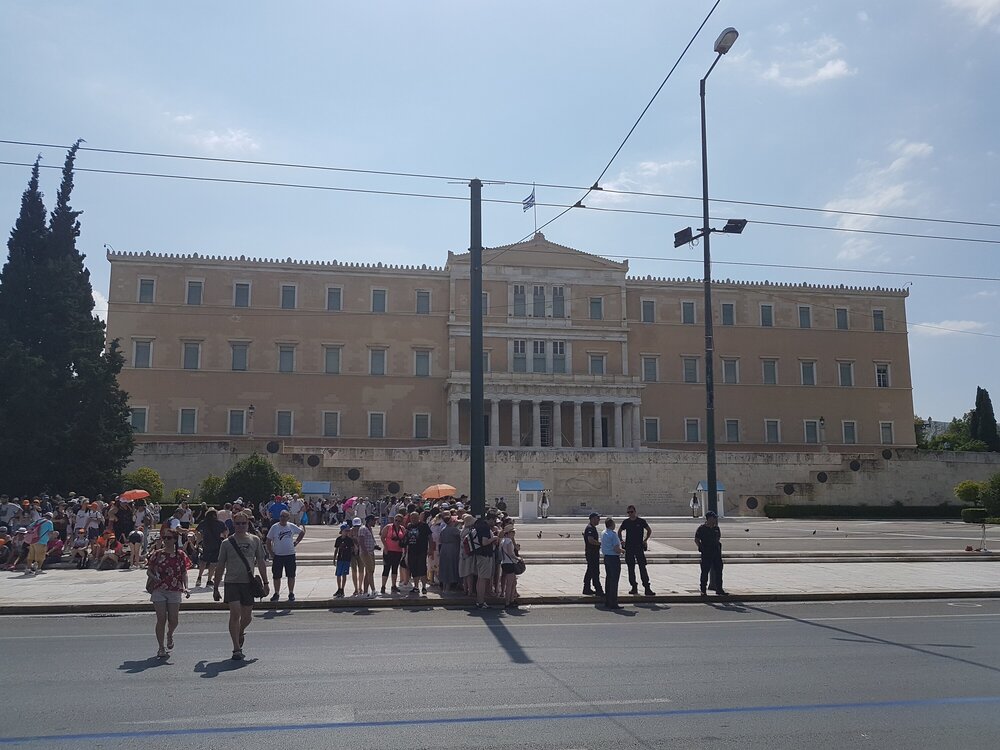
The building faces the Acropolis, but the main attraction that draws crowds of tourists is the changing of the guard, which takes place every hour. The Evzones, an elite unit of the Greek army, come out in very colorful costumes that may seem comical. A wide pleated skirt (fustanella), a red felt hat with a long silk tassel (fario), red leather shoes with black pompoms (tsaroukhi). If you can, visit Athens on Sunday — at 11:00 every week the changing of the guard is especially solemn, with a band, and the procession is greeted by the top military leadership.

Temple of Zeus of Olympia (Ναός του Ολυμπίου Διός)
The next point of the route is the Temple of Zeus of Olympia (Olympion). This ancient sanctuary of Zeus is the largest temple in the history of Greece. Once this impressive structure was decorated with 104 17-meter columns — only 16 of them have survived to our days. From the extant descriptions we know that the central figure of the interior was a giant statue of the Thunderer made of gold and ivory. Next to it stood an equally majestic statue of the Emperor Hadrian, under whom the construction of the Olympion was completed.
- Opening hours are subject to change, check them on the official website before visiting.
- Admission is 8 €, concession ticket 4 €.
- Free admission: March 6, April 18 (International Monuments Day), May 18 (International Museum Day), the last weekend of September annually (European Heritage Days), October 28 and every first Sunday from November 1 to March 31.
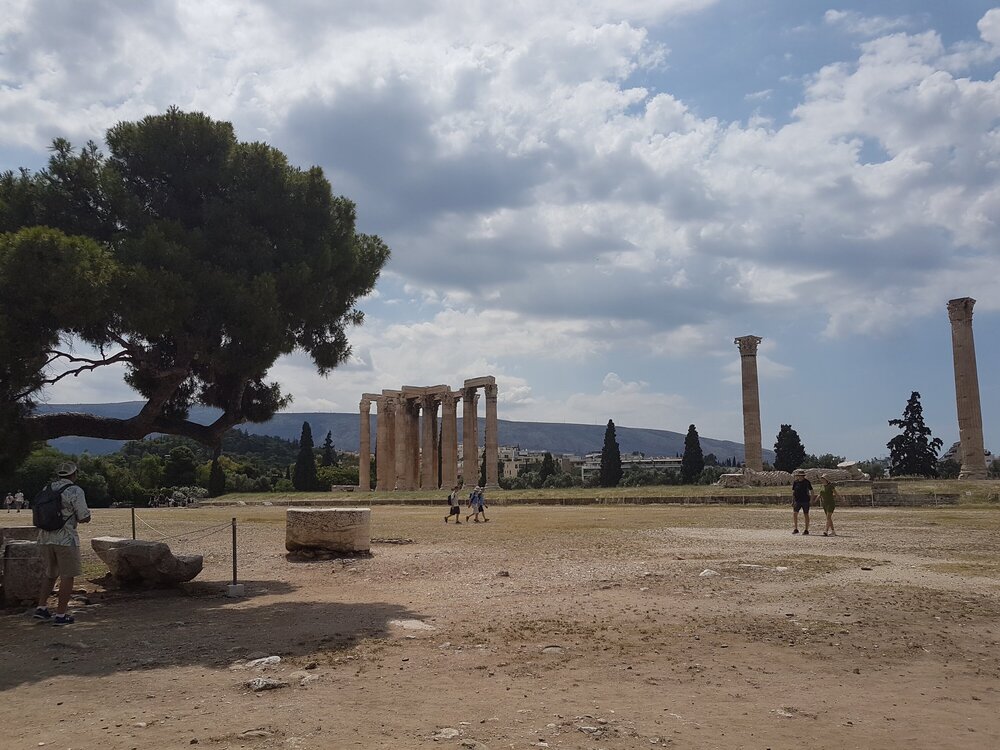
Hadrian’s Arch (Πύλη του Αδριανού)
The 18-meter-high marble structure, dedicated to the Emperor Hadrian, whom the Athenians greatly revered, is located between the Acropolis and the Temple of Zeus Olympius. The arch has been beautifully preserved to this day.
The inscription on the side of the Acropolis reads: «This is Athens, the ancient city of Theseus», while the inscription in front of the Olympion reads: «This is the city of Hadrian, not Theseus». This is how Athenians emphasized their attitude towards the Roman emperor, who did a lot for the city.
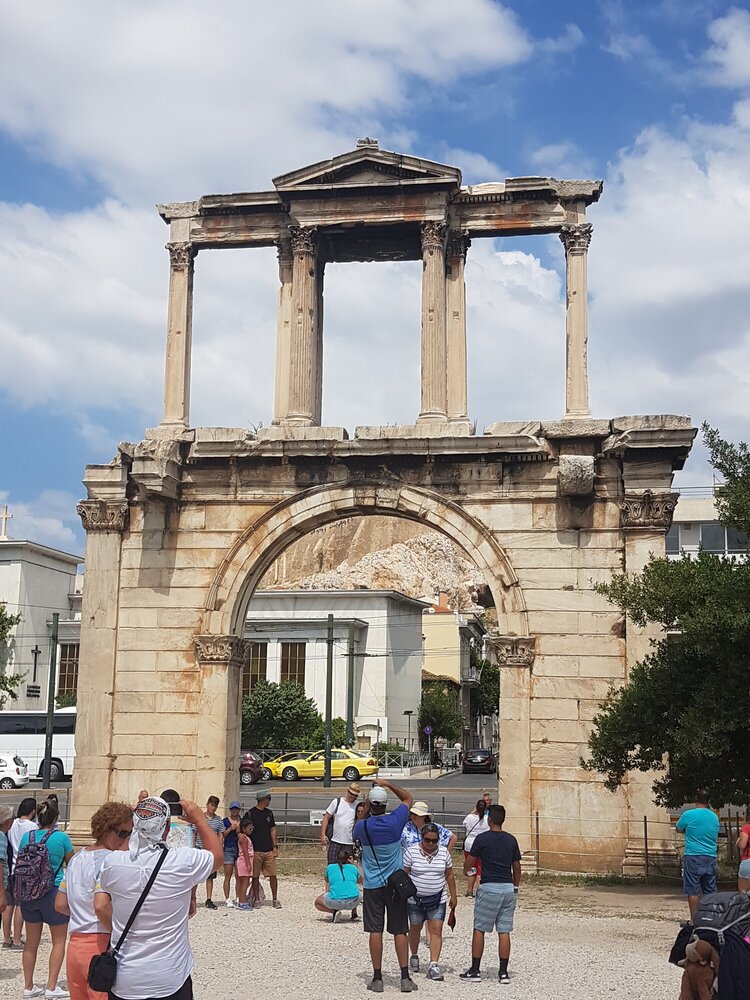
Panathinaikos Stadium (Παναθηναϊκό Στάδιο)
From Hadrian’s Arch you can go straight to the Acropolis, but I recommend to deviate a little from the main route and look at the Olympic (Panathenaic) Stadium — the only stadium in the world completely lined with white marble.
It was here that the first Olympic Games in modern history were held in 1896, and during the 2004 Olympics it hosted the archery competition.
- The stadium is open to the public daily from 8 a.m. to 7 p.m. (March through October) and until 5 p.m. (November through February).
- The cost of a full ticket is 5 €, a reduced ticket 2,5 €.
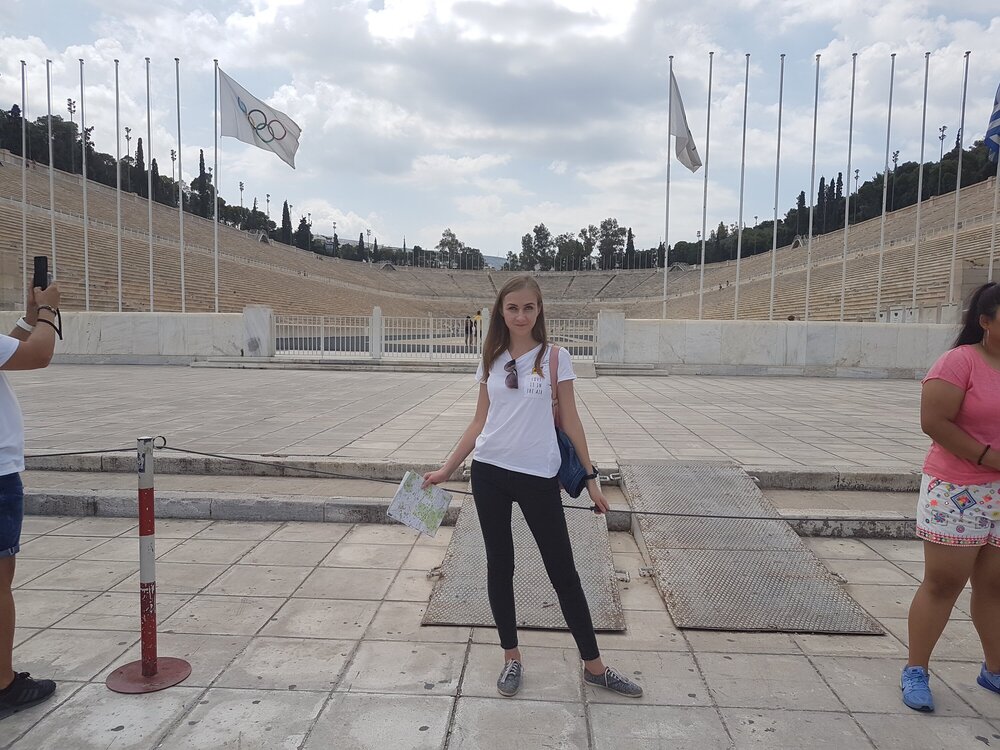
Acropolis of Athens (Ακρόπολη)
There are different opinions about the Acropolis of Athens. To some it seems to be just a pile of stones, while others will say that it is the main attraction, a symbol of the Greek capital and even a wonder of the world. In any case, a visit to Athens will not be complete without a visit to the Acropolis.
It is located on a hill 156 meters high and its name means «upper city» in Greek. It was once of great political and religious importance, but nowadays it is an open-air museum — a complex of 21 historical monuments. The territory of the Acropolis is quite large, and you will have to walk a lot, including uphill, so comfortable shoes will come in handy.
- A full ticket to the Acropolis costs 20 € and a discounted ticket 10 €. You can buy it at the ticket office or online.
- A single ticket to the Acropolis and a number of other Athens attractions (Agora, Archaeological Museum of Ceramica, Lycée, Library of Hadrian, Temple of Zeus Olympian) costs 30 € and is valid for 5 days.
- There are a few days of the year when the Acropolis can be visited for free. These are March 6, April 18, May 18, the last weekend of September, October 28, and every first Sunday of the month between November and March.
- The opening hours of the Acropolis vary from month to month, so I recommend checking this information on the official website before visiting.
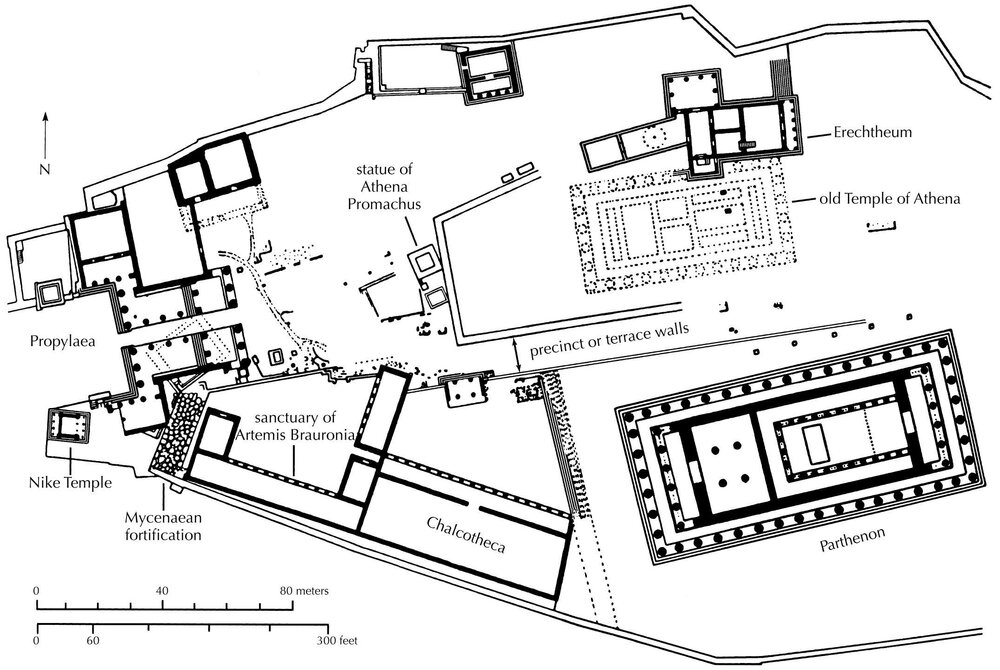
Propylaea
This gateway to the Acropolis is a monumental, majestic structure, which in ancient times was decorated with many sculptures, and its northern wing housed an art gallery — the Pinacotheca.
Temple of Niki Aptheros
The first temple you’ll see once you’re in the Acropolis is dedicated to the ancient Greek goddess of victory, Nike. Her statue was once installed inside. The temple of Nike is considered the strangest structure of the Acropolis — its gate is located not in the front of the building, as was customary, but at the back. The surviving fragments of the sculptures that used to adorn the facade of the building are now preserved in the Acropolis Museum, and their exact replicas have been installed on the temple itself after restoration.
Parthenon
The largest and best-preserved temple of the Acropolis was dedicated to the goddess Athena, the patroness of the city and of all Attica. Her ivory and gold statue was the main decoration of the temple.
The temple itself is made of a rather interesting material — Penelian marble. It is notable for the fact that initially it has a white color, but under the influence of sunlight begins to yellow, so the building turned out to be unevenly colored.
The building is perfectly visible from one point on three sides at once — the authors found an unusual solution for Ancient Greek architecture. The architect of the Parthenon, Callicrates, and the author of the project, Iktinus, installed the columns not parallel to each other, but at an angle, and gave all the pillars different shapes.
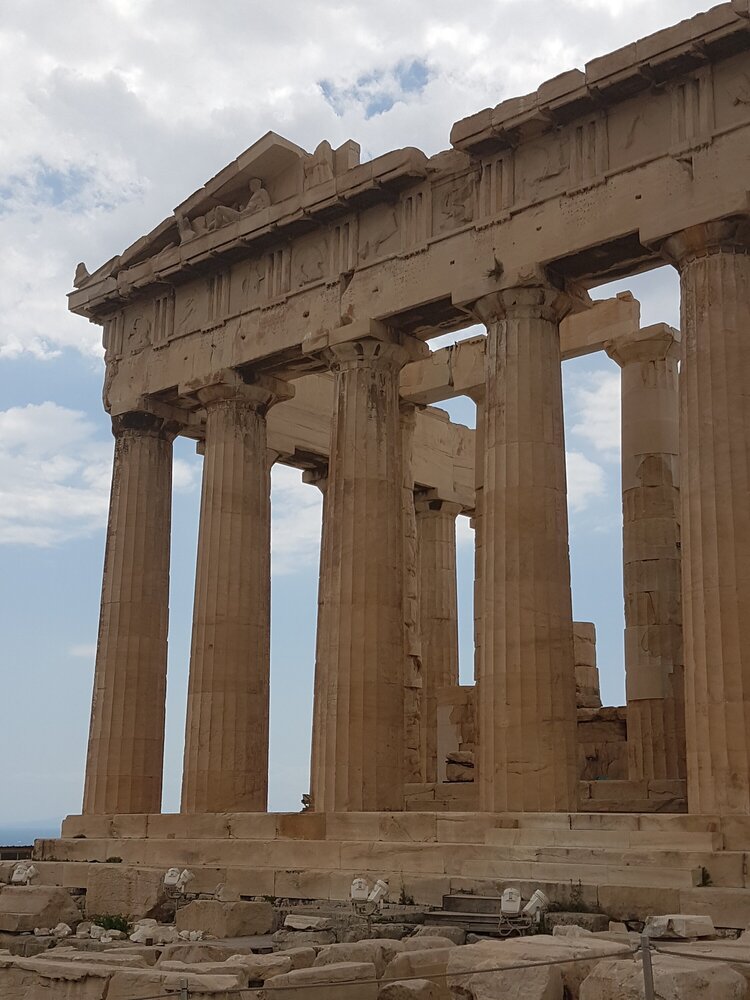
Erechtheion
The second most important temple on the Acropolis was used for mysterious rites and sacrifices. Here Athenian priests practiced the cult of several deities, including Athena and Poseidon.
In ancient times, there was a well of salt water inside the sanctuary: according to legend, it was created after the Lord of the Seas himself struck the rock of the Acropolis with his trident. The well has not survived to this day, but you can still see the beautiful portico of the caryatids — six marble sculptures still support the ceiling of the temple.
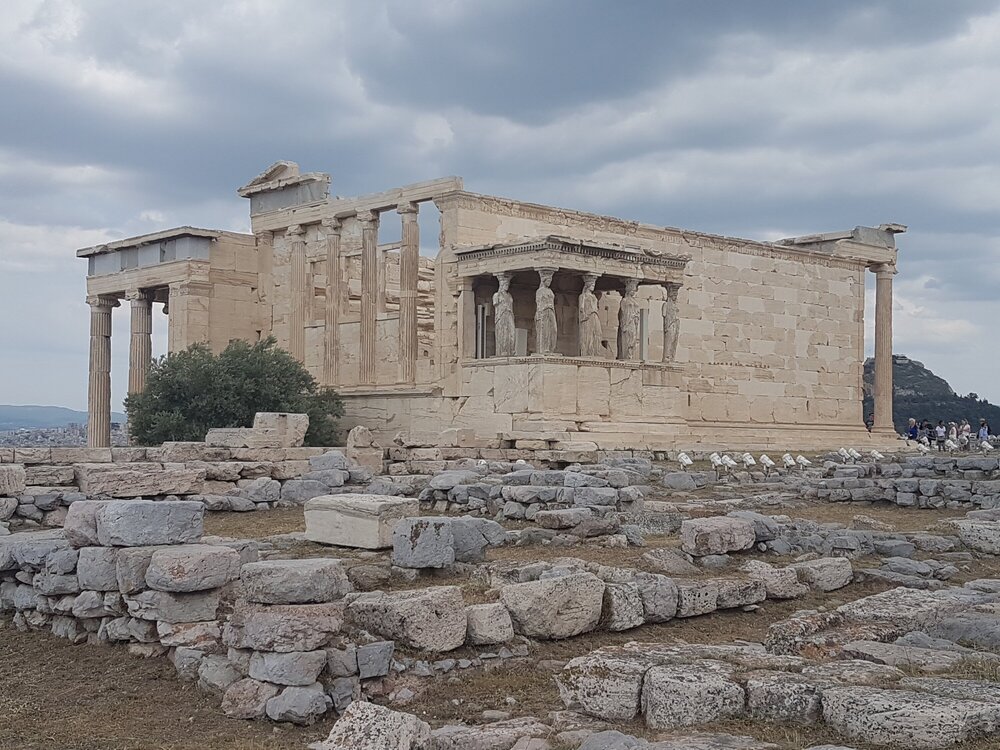
Odeon Herodotus Atticus
The ancient Greek open-air theater, one of the youngest monuments of the Acropolis, is still used today for its intended purpose — it hosts the annual Athens Festival. You can only visit the theater during a performance, but the rest of the time you can admire it from the outside.
Official website of the festival
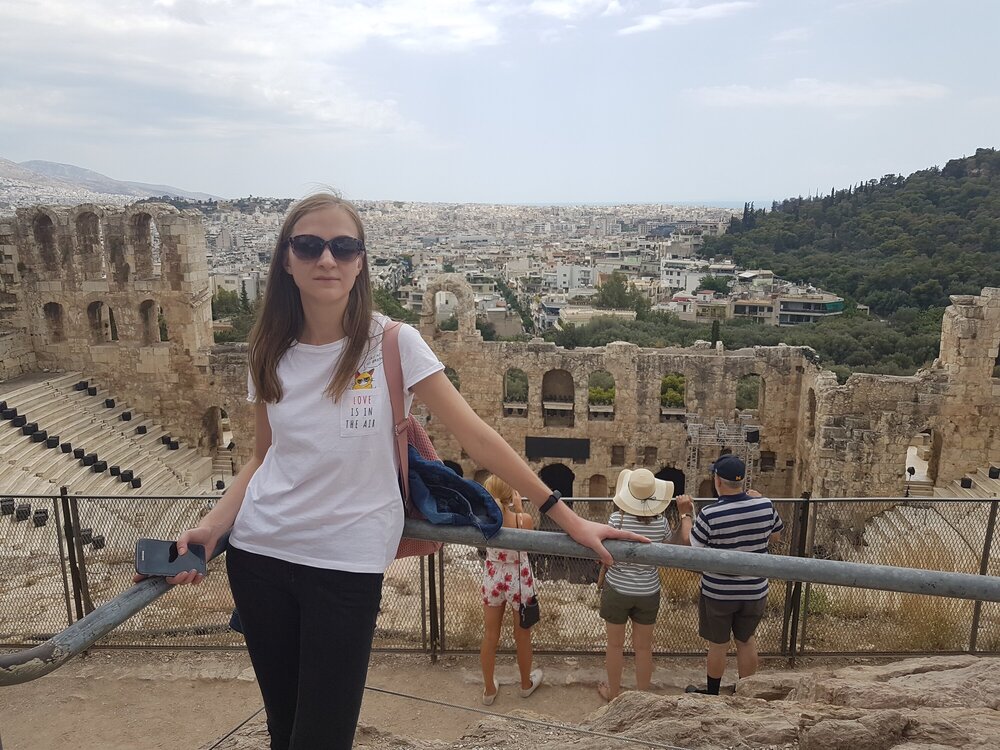
Plaka (Πλάκα)
After visiting the Acropolis, it makes sense to have a snack and buy souvenirs. You can and should do this in Plaka.
Plaka, the traditional quarter of the Greek capital, which has largely preserved its original appearance, conveys the unique atmosphere of the city. The narrow, stone-paved streets with their many restaurants and souvenir shops take many tourists back in time. Plaka is located between the Acropolis and Syntagma Square, so it fits seamlessly into any tourist itinerary — it is always crowded, as it was thousands of years ago.
In a relatively small square there are many architectural monuments of different times and styles. Here you can see the Tower of the Winds and the monument to Lysicrates and walk along the main street of Hadrian’s Wall.
Shopping in Athens
If you want not only souvenirs, but also shopping, you should visit the main shopping street of Athens — Ermou. It is not in vain named in honor of the patron saint of trade, the god Hermes. Here you can find things for every purse, although mostly stores are oriented to the masses. The main shopping area is located between the Monastiraki and Syntagma metro stations.

